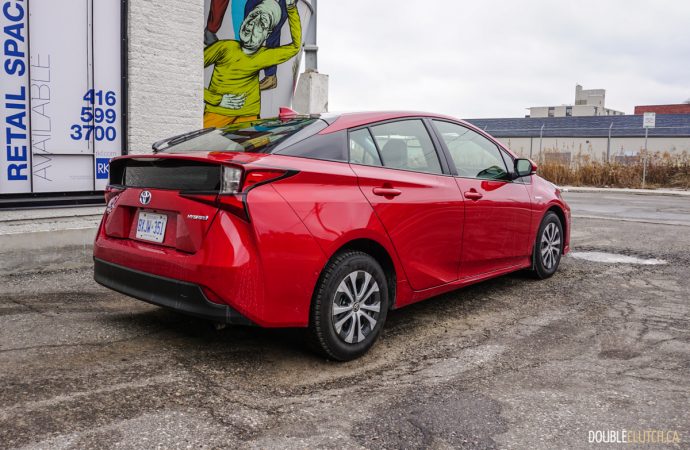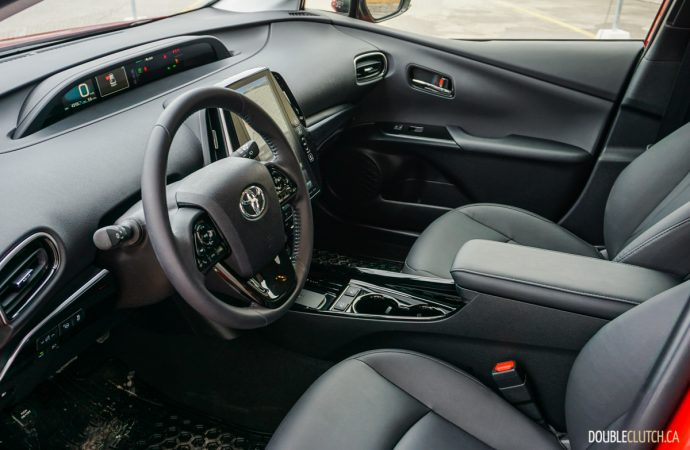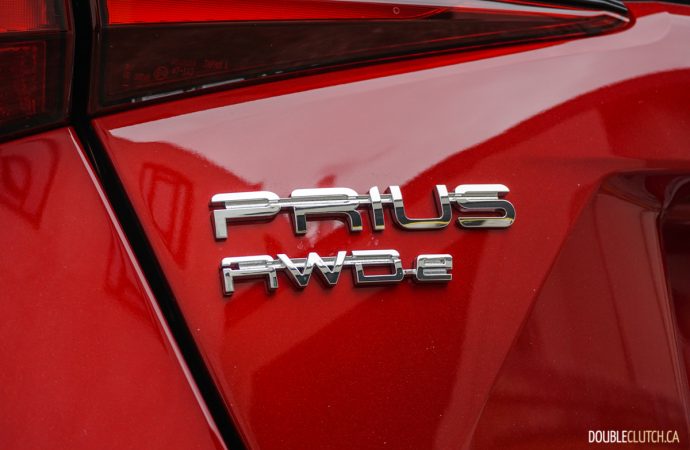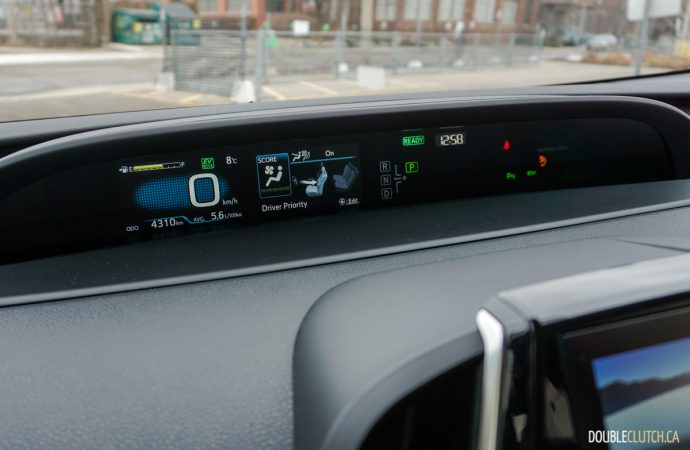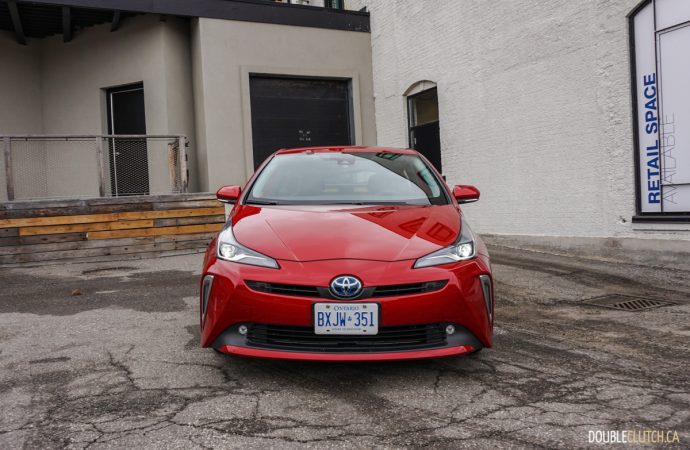Several years before pure EVs were a thing, the hybrid was considered the darling of the green movement and led by Toyota‘s Prius. To own one was a statement that the owner cared about the environment, and Toyota used this to their full advantage and released variants based on the Prius name. We jumped into a 2021 Toyota Prius AWD-e Technology to see if it still has what it takes to be competitive in a market dominated by talk of crossovers and full-electrics.
Not much has changed in this fourth generation Prius from the previous model year, which received a mid-cycle refresh and some visual updates. The same quirky style inside and out that the Prius is known for still remains, and is still very much an engineer’s car. It’s not pretty, but functional and designed with efficiency and aerodynamics in mind as the top priority and nothing else. Potential buyers have come to accept the look or moved on to something else; there is no mistaking the Prius for anything else on the road.
Inside the 2021 Prius AWD-e, the seven-inch touchscreen was upgraded to 11.6 inches for 2020. It looks great until you actually have to use it. The screen is prone to glare and washes out in sunlight. Infotainment and HVAC controls are a mix of on screen controls and touch-buttons that surround the screen. Unfortunately, the buttons are not haptic and repeated pressing is required. Changing stations and controlling the HVAC are tasks requiring several steps and potentially take eyes off the road for prolonged periods of time.
The heads-up display in the Advanced package is a nice addition as the gauge cluster remains in the middle of the console like every Prius since the model’s inception. The package also adds satellite radio, navigation, adaptive headlights, Auto Leveling Headlamps, Intelligent Clearance Sonar and Intelligent Park Assist. Oddly enough, Toyota has removed Android Auto on this trim option and this one alone. If you have an Android phone, another trim level would be a better option when smartphone integration is key.
All-wheel-drive was introduced to the Prius two years ago and is a nice option for Canadians looking for that added traction and peace of mind during the winter months. Unlike most all-wheel-drive systems, this one only works in limited settings, such as when accelerating (up to 10km/h) or when slippage is detected up to a maximum of 70 km/h. Subaru has nothing to worry about, but the Prius’ system does work in the majority of situations where Canadian buyers will find themselves in a bind.
With the added weight of the AWD system, the most important aspect of the Prius is impacted slightly. Our AWD-e model is rated at 4.5L/100km in the city and 4.9L/100km on the highway, a penalty of 0.2L/100km overall over the front-drive version. The 40-liter tank is more than enough for extended urban or highway driving, and the Prius only requires 87-octane regular fuel. In our cold weather testing with no real attempt to keep consumption low, we still saw a miserly 5.4L/100km.
Speed has never been associated with the Prius and that trait continues with this version. The 1.8-litre four-cylinder pushes 96 horsepower on its own, and the electric motor that runs in tandem pushes this number to a whopping 121 combined horsepower. Thankfully, there is enough low end torque to keep pace with traffic, especially in the city, and the CVT does a good enough job to keep power on tap when needed. As a daily commuter, this is the perfect car. It has exceptional road manners and is smooth and comfortable to drive. If your driving style doesn’t require gobs of power, the Prius is a phenomenal choice.
The starting price for the 2021 Prius is a relatively low $28,650. Stepping up to the AWD-e brings this to $29,550. The Technology model adds heated seats and steering wheel, Toyota Safety Sense P with blind spot monitoring, and wireless charging, at $33,450. The $1,800 Advanced Package adds a heads-up display, adaptive headlights, and a few more goodies. Our tester also had an extra $255 paint charge, which brings this model to $35,555 before fees and taxes.
Oddly enough, the Prius’ biggest threat comes from within. Toyota has expanded their hybrid technology to several vehicles that customers can now choose from., including the Corolla Hybrid which is very similar outside of the quirky styling. The Honda Clarity and Insight also exist, but are very low volume products and Honda is making no real effort to move their hybrids. For the price of this tester, buyers can choose a RAV4 Hybrid XLE. It’ll consume slightly more fuel but also gets nearly 100 more horsepower, more utility and an overall better looking vehicle.
With the surge of EVs, the Prius has seen sales decline and with Toyota selling more hybrids, they have recognized their need to diversify their product line. The 2021 Toyota Prius AWD-e Technology is a fine option if you have to own the best compact hybrid possible, and stays true to its identity. Those looking for more capability, space, or power will likely find their match within Toyota’s own lineup.

